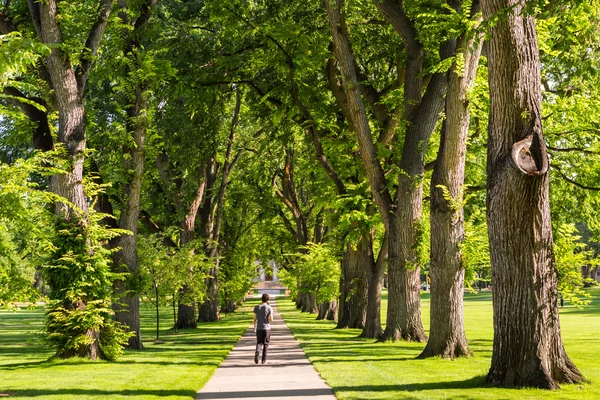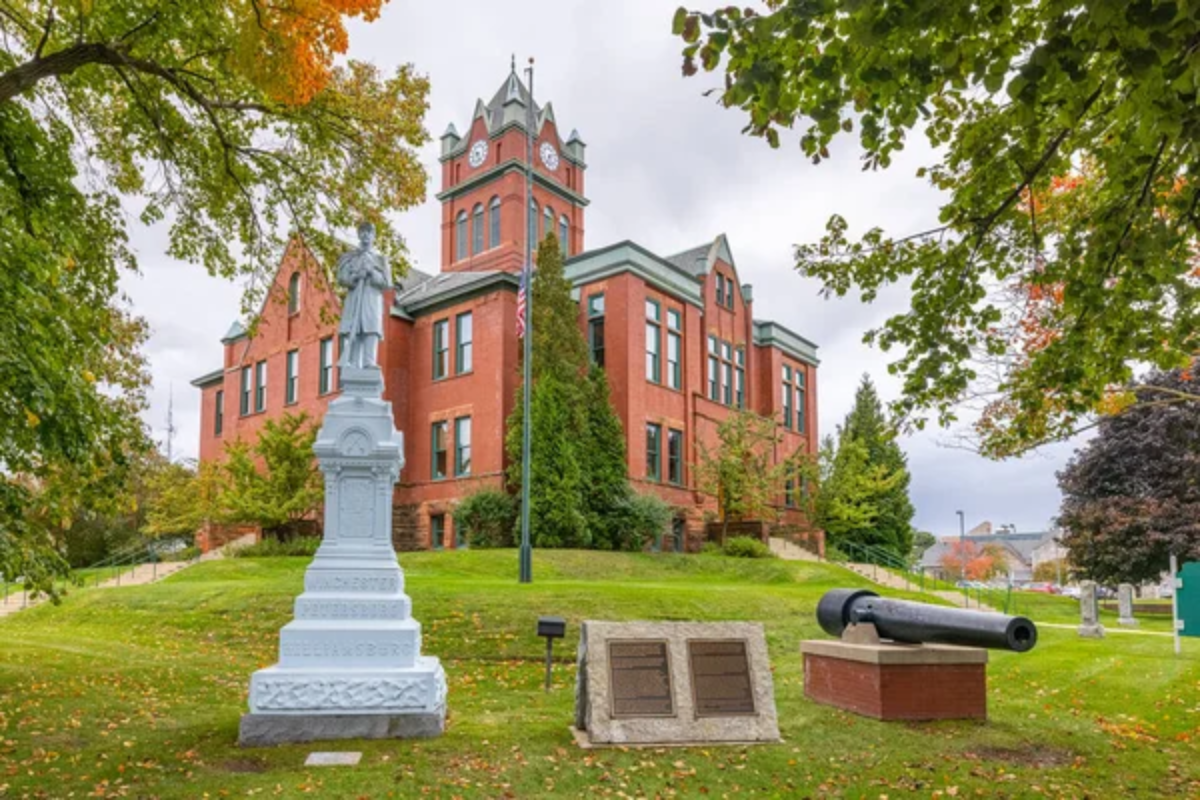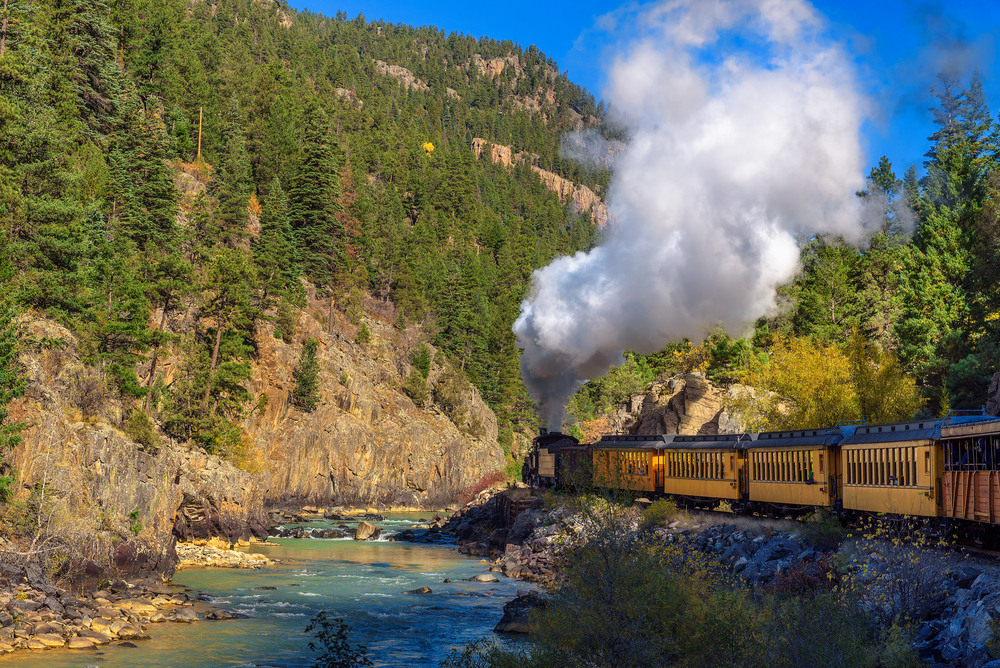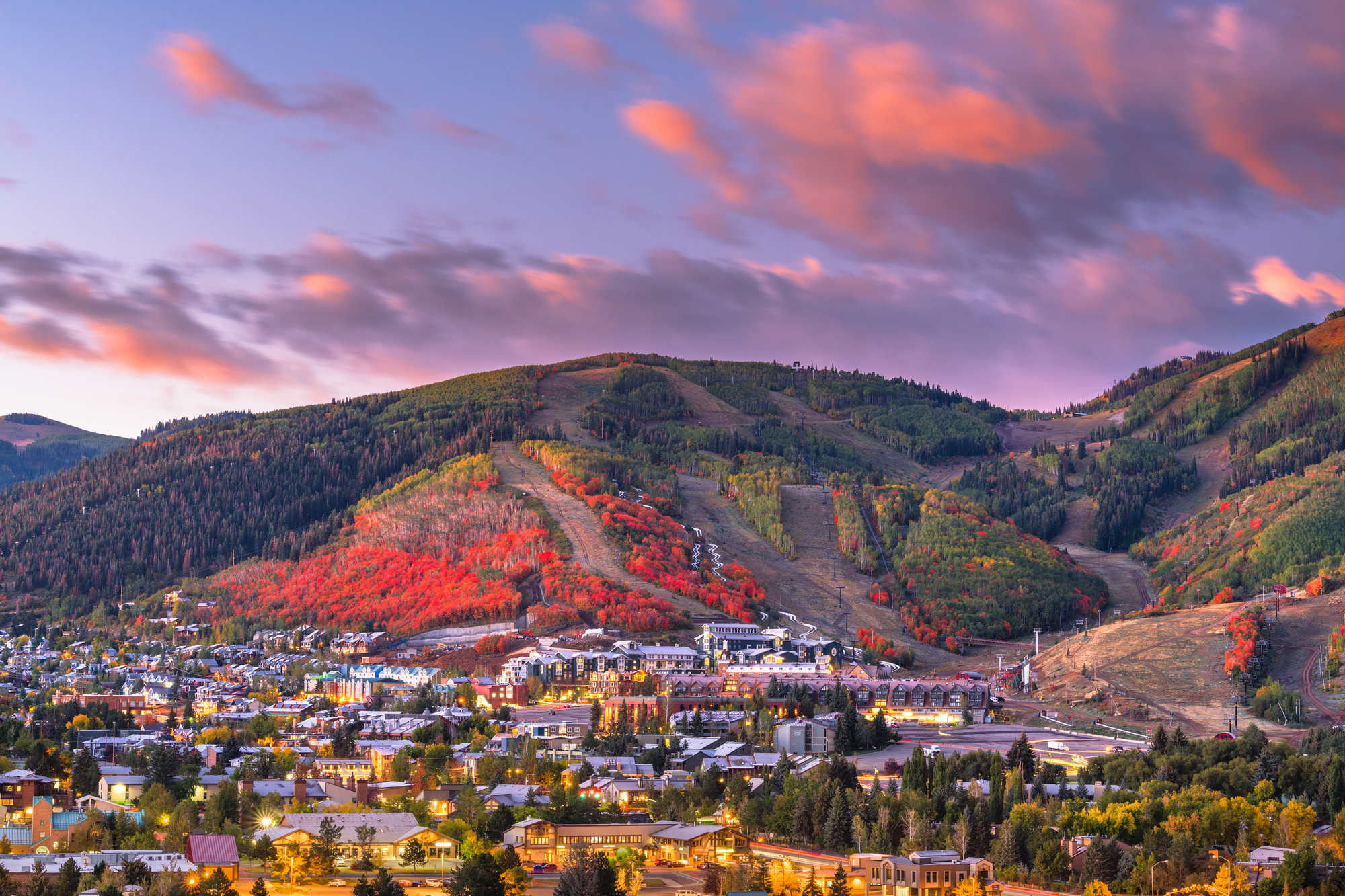Asheville has captured hearts with its blend of mountain scenery, craft brewery culture, artistic communities, and outdoor adventures wrapped in small-town charm. If you’ve fallen under the spell of North Carolina’s hippest mountain town, these destinations offer similar combinations of natural beauty, creative energy, and laid-back vibes that make Asheville special. These places share Asheville’s essential DNA—walkable downtown areas with local character, proximity to outdoor recreation, thriving arts scenes, and food cultures that celebrate both innovation and tradition.
Here is a list of 15 destinations that capture the spirit of Asheville in their unique ways.
Burlington, Vermont

Burlington shares Asheville’s combination of college town energy, craft brewing excellence, and stunning mountain backdrop, all packaged in a walkable downtown that feels authentically local rather than manufactured for tourists. Lake Champlain provides the water element that enhances outdoor recreation options, while the nearby Green Mountains offer hiking and skiing comparable to Asheville’s Blue Ridge access.
The Church Street Marketplace buzzes with local artisans, farm-to-table restaurants, and music venues that showcase both emerging and established acts. Vermont’s progressive culture aligns with Asheville’s values while providing distinct New England charm through maple syrup tastings, covered bridges, and quintessential village greens.
Bozeman, Montana

Bozeman captures Asheville’s outdoorsy spirit with world-class skiing, hiking, and fishing opportunities set against the dramatic backdrop of the Rocky Mountains. The downtown area maintains a small-town character despite growth driven by outdoor enthusiasts and tech workers who appreciate the blend of wilderness access and cultural amenities.
Montana State University adds youthful energy, while the local food scene emphasizes farm-to-table dining and innovative interpretations of Western cuisine. The craft brewery concentration rivals Asheville’s, with establishments that serve as community gathering spots where locals discuss trail conditions, weather patterns, and weekend adventure plans.
Like Travel Pug’s content? Follow us on MSN.
Bend, Oregon

Bend offers perhaps the closest parallel to Asheville’s combination of outdoor recreation, craft brewing, and creative community, all set in the stunning high desert of central Oregon. The Cascade Mountains provide year-round adventure opportunities that rival the Blue Ridge, while the Deschutes River adds water sports to the activity menu.
Downtown Bend maintains walkable charm with galleries, breweries, and restaurants that reflect the city’s commitment to sustainability and innovation. The local food scene emphasizes fresh, regional ingredients, while the arts community creates everything from traditional crafts to cutting-edge installations that reflect Oregon’s creative spirit.
Missoula, Montana

Missoula combines university-town intellectual energy with genuine Western character, creating an atmosphere that feels both sophisticated and authentically rugged. The Clark Fork River flowing through downtown provides recreational opportunities and scenic beauty, while nearby wilderness areas offer hiking, fishing, and skiing that compare favorably with anything near Asheville.
The local music scene is legendary, with venues that regularly host touring acts alongside local bands performing everything from folk to punk. Historic preservation efforts have maintained the downtown’s character while supporting businesses that reflect the community’s values of environmental consciousness and artistic expression.
Bellingham, Washington

Bellingham offers Asheville’s combination of outdoor recreation, arts culture, and progressive values with the added benefit of Pacific Northwest scenery, including mountains, forests, and Puget Sound access. Western Washington University provides college-town energy, while the proximity to both Vancouver and Seattle adds metropolitan cultural options without sacrificing small-city charm.
The local food scene emphasizes fresh seafood and Pacific Northwest ingredients, while craft breweries take advantage of regional hops and pure mountain water. Outdoor enthusiasts enjoy hiking in North Cascades National Park, kayaking in island-dotted waters, and skiing at nearby Mount Baker.
Like Travel Pug’s content? Follow us on MSN.
Flagstaff, Arizona

Flagstaff provides desert mountain views and outdoor recreation opportunities that rival Asheville’s attractions while offering distinctly Southwestern cultural experiences. Northern Arizona University adds college-town vitality to a community that values environmental consciousness and outdoor adventure above traditional urban amenities.
The historic downtown maintains character through preserved Route 66 architecture while supporting businesses that reflect the area’s multicultural heritage and artistic traditions. Dark Sky designation makes Flagstaff a prime destination for stargazing, while nearby national monuments and forests provide hiking, skiing, and exploration opportunities in dramatically different terrain than Asheville’s eastern mountains.
Fort Collins, Colorado

Fort Collins combines craft brewing heritage, university energy, and outdoor recreation access in ways that directly parallel Asheville’s appeal to adventure-seeking professionals and creative types. The downtown area maintains its historic character while supporting innovative restaurants, breweries, and shops that reflect Colorado’s outdoor culture and progressive values.
Colorado State University provides research opportunities and cultural programming, while the Cache la Poudre River offers in-town recreation, including kayaking and fishing. Proximity to Rocky Mountain National Park and multiple ski areas ensures year-round outdoor adventure options that rival anything Asheville offers.
Taos, New Mexico

Taos offers artistic heritage and a spiritual atmosphere that resonates with visitors drawn to Asheville’s creative energy, though expressed through distinctly Southwestern adobe architecture and Native American cultural influences. The town’s position at the base of the Sangre de Cristo Mountains provides dramatic scenery and outdoor recreation, including skiing at Taos Ski Valley and hiking in Carson National Forest.
The arts community includes both traditional Native American crafts and contemporary art spaces, while the food scene combines Mexican influences with innovative contemporary cuisine. Taos maintains its authentic character despite tourism pressure, with local businesses that reflect the area’s unique cultural blend.
Traverse City, Michigan

Traverse City provides Asheville’s combination of outdoor recreation, food culture, and small-city charm in a setting dominated by Great Lakes rather than mountains. The downtown area buzzes with restaurants focusing on local ingredients, craft breweries highlighting regional hops and fruit, and shops reflecting the region’s maritime heritage.
Nearby Sleeping Bear Dunes and numerous inland lakes offer recreation opportunities from hiking to sailing, while the region’s wineries add sophisticated agricultural tourism. Summer festivals celebrating everything from film to cherries create community events that bring together locals and visitors in ways that mirror Asheville’s celebratory culture.
Durango, Colorado

Durango offers Old West heritage combined with contemporary outdoor recreation culture in a setting that rivals Asheville for natural beauty and adventure opportunities. The historic downtown maintains 19th-century character while supporting modern businesses that cater to hiking, skiing, mountain biking, and river running enthusiasts.
Mesa Verde National Park and San Juan National Forest provide exploration opportunities in dramatically different terrain than Asheville’s eastern mountains. Fort Lewis College adds educational and cultural programming, while the famous narrow-gauge railroad offers scenic journeys that combine history with spectacular mountain views.
Steamboat Springs, Colorado

Steamboat Springs combines world-class skiing with genuine Western ranching culture, creating an authentic mountain town atmosphere that appeals to visitors seeking both adventure and cultural experiences. The downtown area maintains a working ranch community character while supporting restaurants, breweries, and shops that serve both locals and outdoor enthusiasts.
Natural hot springs provide year-round relaxation opportunities, while the surrounding wilderness offers hiking, fishing, and skiing in some of Colorado’s most spectacular terrain. The local music scene features everything from honky-tonk to jazz, while the arts community creates works inspired by the dramatic landscape and cowboy heritage.
Santa Barbara, California

Santa Barbara offers sophisticated culture and outdoor recreation in a Mediterranean-climate setting that provides year-round adventure opportunities different from but comparable to Asheville’s seasonal attractions. The downtown area combines Spanish colonial architecture with contemporary restaurants, galleries, and wine-tasting rooms that reflect California’s agricultural abundance and innovative food culture.
Nearly all beaches provide water sports, while nearby mountains offer hiking with ocean views impossible to find near Asheville. University of California Santa Barbara adds intellectual energy while the regional wine industry creates agricultural tourism opportunities that parallel Asheville’s growing brewery scene.
Park City, Utah

Park City transforms from a mining town to an outdoor recreation destination while maintaining a historic character that resonates with visitors who appreciate Asheville’s preservation of mountain culture alongside modern amenities. World-class skiing attracts winter visitors, while summer hiking and mountain biking in the Wasatch Mountains rival any outdoor recreation near Asheville.
The downtown area supports restaurants focusing on innovative cuisine, galleries featuring both local and international artists, and shops reflecting the community’s outdoor lifestyle. Sundance Film Festival brings international attention while maintaining the town’s commitment to artistic expression and independent culture.
Nelson, British Columbia

Nelson offers perhaps the most direct parallel to Asheville’s combination of mountain scenery, artistic community, and outdoor recreation, though expressed through distinctly Canadian culture and architecture. Kootenay Lake provides water recreation, while nearby mountains offer hiking, skiing, and exploration in pristine wilderness settings.
The downtown area maintains heritage character through preserved Victorian architecture while supporting businesses that reflect the community’s commitment to sustainability and local culture. The arts scene includes everything from traditional crafts to cutting-edge contemporary work, while the food culture emphasizes local ingredients and international influences.
Portsmouth, New Hampshire

Portsmouth combines historic seaport character with contemporary culture in ways that mirror Asheville’s blend of preservation and innovation, though focused on maritime rather than mountain heritage. The downtown area maintains walkable character while supporting restaurants specializing in fresh seafood, craft breweries utilizing New England ingredients, and shops reflecting the region’s nautical traditions.
Nearby beaches and coastal islands provide recreation opportunities, while the White Mountains offer hiking within easy driving distance. The University of New Hampshire adds educational programming, while the local arts scene draws inspiration from both coastal beauty and New England’s cultural heritage.
The Common Thread That Binds

These destinations share Asheville’s ability to balance the preservation of authentic character with the accommodation of newcomers drawn by natural beauty and cultural opportunities. They understand that sustainable growth requires maintaining the qualities that made them attractive in the first place—walkable downtowns, commitment to local businesses, access to outdoor recreation, and support for arts communities that create rather than merely consume culture.
Each place offers its interpretation of the lifestyle that makes Asheville special while providing a unique regional character that ensures your travels expand rather than simply repeat familiar experiences.
More from Travel Pug

- Cities Growing so Fast You Won’t Recognize Them in 10 Years
- 13 Destinations Where Tourists Regularly Regret Their Trip
- 16 U.S. Cities That Are Quietly Becoming Travel Hotspots
- Where to Travel If You Love Long Bus Rides and Daydreams
- 20 Cities Perfect for Solo Travelers Who Crave Adventure & Culture
Like Travel Pug’s content? Follow us on MSN.
